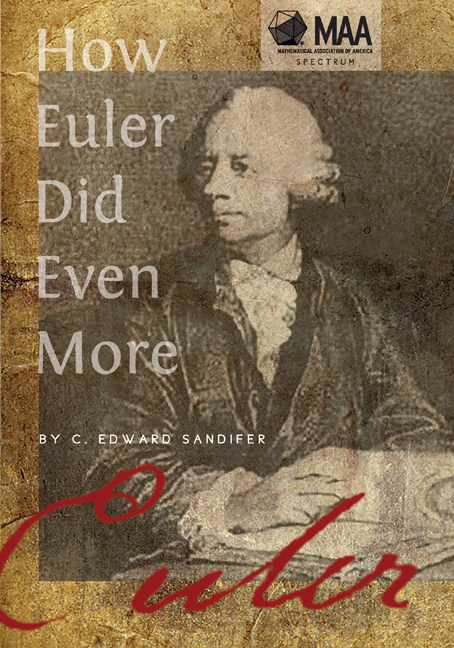11 - Life and Death – Part 2 (August 2008)
from Part III - Combinatorics
Summary
Last month we began this two part series on Euler's work in actuarial science with an account of his study of mortality, the “death” part of “Life and Death.” This month we turn to the other half of the equation and ask the mathematical question, “Where do those babies come from?”
To seek his answers, Euler begins with a number of assumptions. Some of them are just to simplify the beginnings of his analysis and will be replaced with more sophisticated assumptions later. Others are simple because he sees no way to gather the data to support more complex ones. Still others are just naïve.
For notation, Euler takes M to be the current population and, taking both births and deaths into account, he takes mM to be the population one year later. He patiently explains that if births and deaths are equal in number, then m = 1 and the population will remain the same, that if births exceed deaths then m > 1 and the population will increase, etc. This level of detail is unusual, even for Euler. Clearly he expects that some of the people who read this paper do not know higher mathematics.
Euler presents his first assumption on the birthrate, what he call the “multiplication,” as follows:
“Now, having fixed the principle of propagation, which depends on marriages and fertility, it is evident that the number of infants which are born in the course of a year ought to have a certain ratio to the number of living men.”
Though Euler himself was the father of 13 children, he was also a man of the 18th century, and like his contemporaries, would have thought it unseemly to mention any role women might play in the propagation of the species, other than the oblique reference contained in the word “fertility” (fécondité). He also primly and properly assumes that all children are born inside of wedlock, an assumption as untrue then as it is now, at the same time being irrelevant to the mathematics of his model.
- Type
- Chapter
- Information
- How Euler Did Even More , pp. 74 - 80Publisher: Mathematical Association of AmericaPrint publication year: 2014



